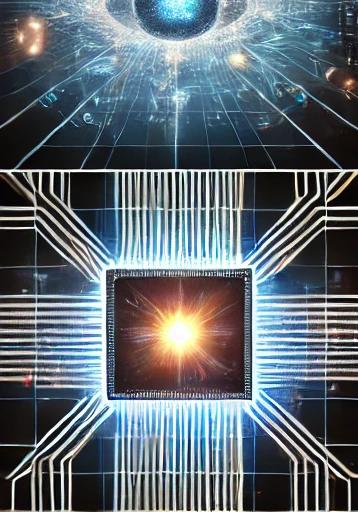Evolving with Innovation
Introduction: The Ever-Changing IT Landscape
The world of Information Technology (IT) is in a constant state of flux. With rapid advancements in technology, the growing demand for efficiency, scalability, and security requires the industry to evolve continuously. As businesses embrace digital transformation, IT professionals face a critical challenge: adopting new concepts to address emerging needs.
In this blog, we’ll explore why fresh ideas and paradigms are essential for IT and introduce key concepts poised to shape the future of the industry.
Why Do We Need New Concepts in IT?
As IT systems grow in complexity, existing methodologies and tools often struggle to keep pace. Here are the primary reasons for introducing new concepts in IT:
- Increasing Complexity:
- Modern IT systems span cloud platforms, edge devices, and on-premises infrastructure. Managing this complexity demands innovative approaches.
- Rapid Technological Advancements:
- Technologies like AI, blockchain, and quantum computing require rethinking traditional IT frameworks.
- Cybersecurity Challenges:
- As threats become more sophisticated, IT systems need advanced security models to protect sensitive data.
- Sustainability:
- With increasing energy consumption in data centers, IT must adopt eco-friendly practices.
- Demand for Agility:
- Businesses expect faster deployment and real-time adaptability, pushing IT to adopt new paradigms.
Emerging IT Concepts and Their Importance
- Edge Computing:
- What It Is: Decentralizing data processing by moving it closer to the data source (e.g., IoT devices).
- Why It Matters: Reduces latency, minimizes bandwidth usage, and improves real-time decision-making.
- Example: Self-driving cars use edge computing to process sensor data instantly, ensuring quick responses.
- Zero Trust Security:
- What It Is: A cybersecurity model that assumes no user or device is trustworthy by default, requiring continuous verification.
- Why It Matters: Protects against insider threats and unauthorized access in hybrid work environments.
- Example: Google’s BeyondCorp model implements zero trust principles, securing remote access.
- AI-Driven Development (AIDevOps):
- What It Is: Integrating AI into DevOps workflows to enhance automation, testing, and deployment.
- Why It Matters: Accelerates software delivery while improving accuracy and scalability.
- Example: Netflix uses AI to test and optimize its services, ensuring a seamless user experience.
- Sustainability in IT (Green IT):
- What It Is: Practices aimed at reducing IT’s environmental footprint, such as energy-efficient data centers and e-waste recycling.
- Why It Matters: Aligns IT operations with global sustainability goals.
- Example: Google uses AI to optimize cooling in its data centers, reducing energy consumption by 40%.
- Composable IT Architecture:
- What It Is: A modular approach to IT systems where resources are dynamically assembled based on application needs.
- Why It Matters: Increases agility, reduces costs, and supports rapid innovation.
- Example: E-commerce platforms use composable architectures to scale resources during peak shopping seasons.
- Quantum-Safe Cryptography:
- What It Is: Cryptographic methods designed to withstand potential threats from quantum computers.
- Why It Matters: Ensures data security in a post-quantum world.
- Example: Financial institutions are adopting quantum-safe algorithms to future-proof sensitive transactions.
How IT Professionals Can Adapt
To thrive in this evolving landscape, IT professionals must embrace lifelong learning and adaptability. Here’s how:
- Stay Informed:
- Follow industry blogs, webinars, and certifications to keep up with emerging trends.
- Invest in Skills:
- Learn new technologies like AI, blockchain, and edge computing to remain relevant.
- Collaborate:
- Join cross-functional teams and communities to share knowledge and innovate together.
- Adopt a Growth Mindset:
- Be open to experimentation and embrace change as an opportunity for improvement.
Conclusion: Driving Innovation in IT
The need for new concepts in IT is not just about keeping up with technology—it’s about staying ahead of the curve. By adopting forward-thinking approaches, IT professionals can tackle today’s challenges and seize tomorrow’s opportunities.
As the IT landscape continues to evolve, the question is not whether we need new concepts but how quickly we can embrace them. Let’s lead the way in building smarter, more sustainable, and more secure IT systems.
Call to Action
Stay tuned to Explore AIQ for more insights into the latest IT innovations and practical tips for navigating the ever-changing tech landscape. Subscribe today and join the journey of continuous evolution in IT!



